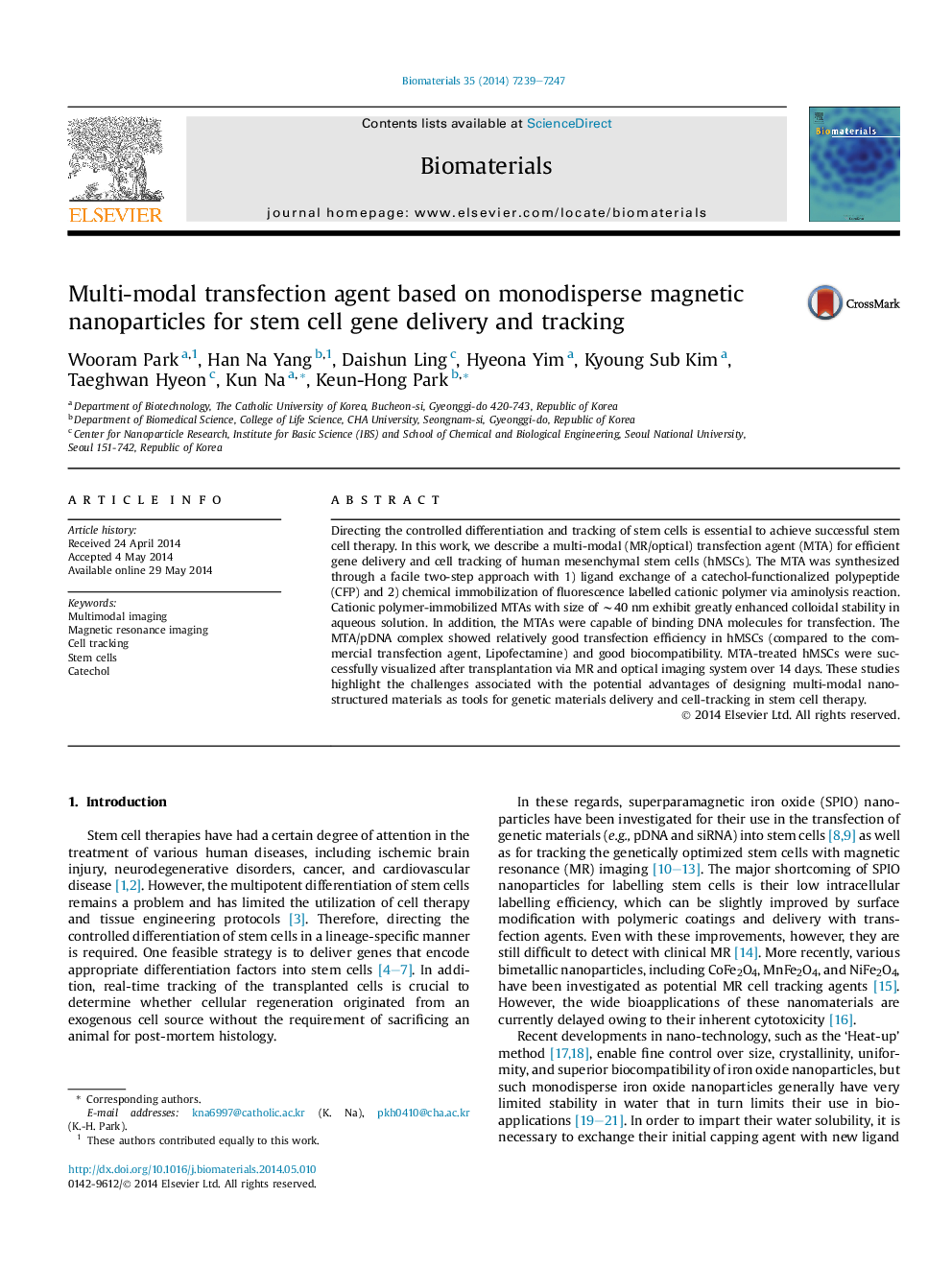| Article ID | Journal | Published Year | Pages | File Type |
|---|---|---|---|---|
| 10227593 | Biomaterials | 2014 | 9 Pages |
Abstract
Directing the controlled differentiation and tracking of stem cells is essential to achieve successful stem cell therapy. In this work, we describe a multi-modal (MR/optical) transfection agent (MTA) for efficient gene delivery and cell tracking of human mesenchymal stem cells (hMSCs). The MTA was synthesized through a facile two-step approach with 1) ligand exchange of a catechol-functionalized polypeptide (CFP) and 2) chemical immobilization of fluorescence labelled cationic polymer via aminolysis reaction. Cationic polymer-immobilized MTAs with size of â¼40Â nm exhibit greatly enhanced colloidal stability in aqueous solution. In addition, the MTAs were capable of binding DNA molecules for transfection. The MTA/pDNA complex showed relatively good transfection efficiency in hMSCs (compared to the commercial transfection agent, Lipofectamine) and good biocompatibility. MTA-treated hMSCs were successfully visualized after transplantation via MR and optical imaging system over 14 days. These studies highlight the challenges associated with the potential advantages of designing multi-modal nanostructured materials as tools for genetic materials delivery and cell-tracking in stem cell therapy.
Related Topics
Physical Sciences and Engineering
Chemical Engineering
Bioengineering
Authors
Wooram Park, Han Na Yang, Daishun Ling, Hyeona Yim, Kyoung Sub Kim, Taeghwan Hyeon, Kun Na, Keun-Hong Park,
